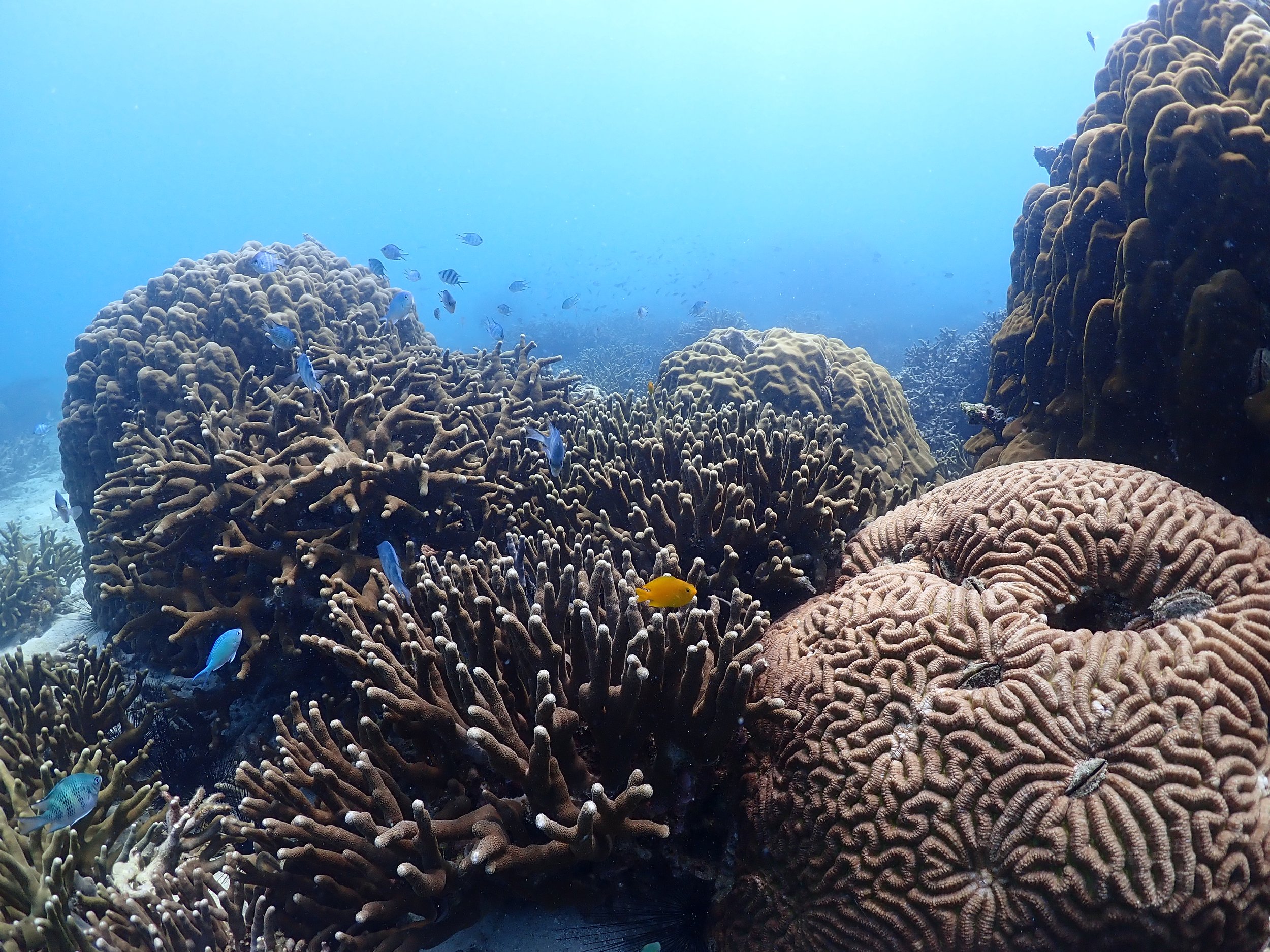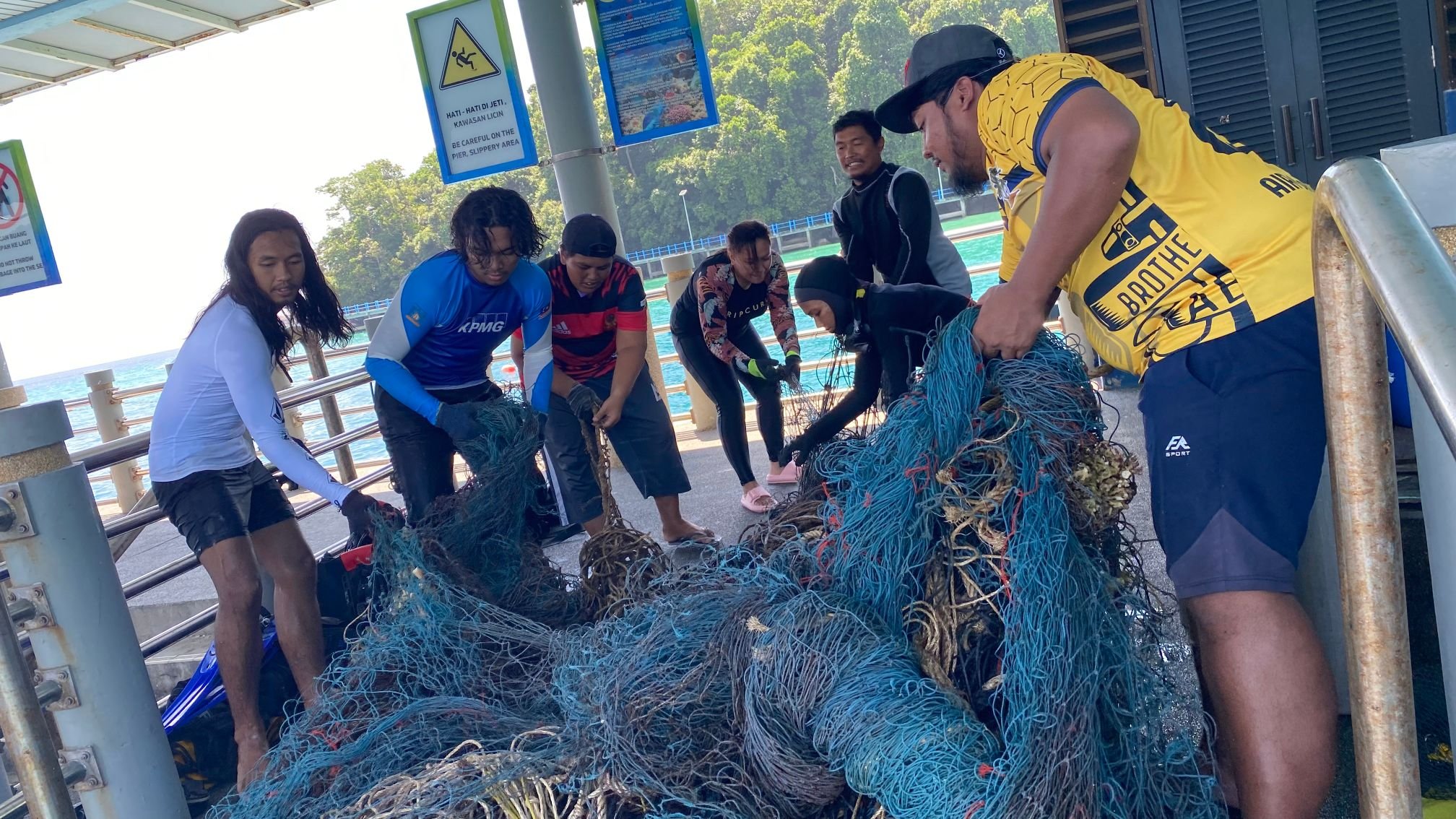Representing Biodiversity at COP 16
So this is exciting news: I will be representing Reef Check Malaysia at COP 16 in Cali, Colombia from 21st October to 1st November!
I will join our partners, Pacific Environment and the other ASEAN team members from Thailand, Vietnam and the Philippines.
The regional team has been working together for nearly three years, supported by Pacific Environment, to advocate for greater protection of marine ecosystems. Specifically, we have been calling on our various national governments to support Target 3 of the Kunming-Montreal Global Biodiversity Framework (KMGBF, or just GBF)
I feel privileged to have this opportunity to meet with and learn from, some of the leading thinkers in biodiversity conservation. The link between global warming, climate change and biodiversity loss is increasingly being acknowledged; you only have to look at the current bleaching event affecting coral reefs in the Indo-Pacific – which is caused by greenhouse gas-linked ocean warming – to see the connection.
Reef Check Malaysia will be representing biodiversity at COP 16
What is COP 16?
Yeah, let’s deal with some of the jargon. “COP” simply stands for “Conference of the Parties" - in itself a bit of UN jargon that means a meeting of the signatories (or parties) to a given convention (or treaty).
The 16? That’s just the number of the meetings – they are held every 2 years.
So, at COP 16, the parties to the UN Convention on Biological Diversity (UNCBD) will gather to discuss a variety of issues related to global efforts to protect and conserve biological diversity.
Not to be confused with…
There’s another COP happening soon which is COP 29, which will be held in Baku, Azerbaijan, in November. That COP is the Conference of the Parties to the UN Framework Convention on Climate Change (UNFCCC).
Different topic – related, but different!!
History of the Convention on Biological Diversity
The Convention was adopted by the Intergovernmental Negotiating Committee for a Convention on Biological Diversity in Nairobi in 1992. The Convention was open for signature during the UN Conference on Environment and Development (UNCED – more commonly known as the “Earth Summit”) held in Rio de Janeiro, Brazil, in June 1992.
The Earth Summit, held on the occasion of the 20th anniversary of the first Human Environment Conference (HEC), brought together political leaders, diplomats, scientists, media, and NGOs from 179 countries to respond to the impact of human socio-economic activities on the environment. We can date many of our current concerns about “the environment” to that Earth Summit.
Photo credit: United Nations
So, if you thought all this stuff was new…it isn’t!
It has a long history, going back to 1972. I was 11 years old! 52 years after the first HEC, and 32 years after the Earth Summit…what have we achieved?
Have a look at this website for more information on the Earth Summit, and the important discussions on sustainability.
Why am I going to COP 16?
Those of you who follow these issues will know that two years ago, at COP 15 in Montreal, parties agreed to a new set of biodiversity conservation targets.
One of the most contentious is Target 3, which sets a target to protect 30% of land and marine areas by the year 2030, the so-called “30x30 target”. Other targets cover the rights of indigenous people and local communities and funding for biodiversity conservation.
So, we have some targets. But how to achieve them? What programmes need to be implemented at the national level to make the targets real?
The National Biodiversity Strategies and Action Plans
That’s where the so-called NBSAPs come in. The National Biodiversity Strategies and Action Plans are national-level policies for achieving the GBF targets.
In Malaysia, the Ministry of Natural Resources and Environmental Sustainability (NRES) is responsible for the National Policy on Biological Diversity, which essentially is Malaysia’s NBSAP.
We had the pleasure of meeting with YB Nik Nazmi Nik Ahmad recently.
COP 16 Is About Taking Actions
If COP 15 was about setting the targets, COP 16 will be about how to achieve those targets. From The Nature Conservancy's website:
“The goal [of COP 16] is to transform the commitments of the 2022 GBF into actionable plans. Implementing the GBF demands global cooperation, recognizing biodiversity’s critical role in our economy, food security, climate stability, and planetary health. Ultimately, the decisions made at COP 16 will shape our planet’s future.”
And that’s why I am looking forward to attending, to understand what is going on at the policy level, and maybe even bring some ideas back to Malaysia.
I particularly want to learn more about how countries are going to fund biodiversity protection. Malaysia has made a good start with the annual Ecological Fiscal Transfers (EFTs), funds paid to States to help them protect their biodiversity.
But, much more funding is required if we are to address the imbalance in funding for biodiversity protection. As one of the "mega-biodiverse" countries, Malaysia has a lot to lose.
What about all that carbon?
As my brother is fond of reminding me, it seems somewhat ironic that a bunch of people professing to be interested in protecting the environment…are flying all over the world emitting carbon!!
I have no defence.
It is, in my opinion, a perfectly good argument. So, how do I justify it? That also has a pretty simple response.
Sometimes, more things get done if people get together to discuss issues. Sure, we all learned during COVID-19 that much can be achieved via virtual meetings and calls. But at the end of the day, sometimes you have to meet face to face…and given the importance of the topic, I think this is one of those times.
Follow along my journey at COP 16 soon!
______________________________________________________________________________________
If you'd like to support us, you can follow our social media pages for any updates on our work and volunteering opportunities, or you could also donate towards our cause.














